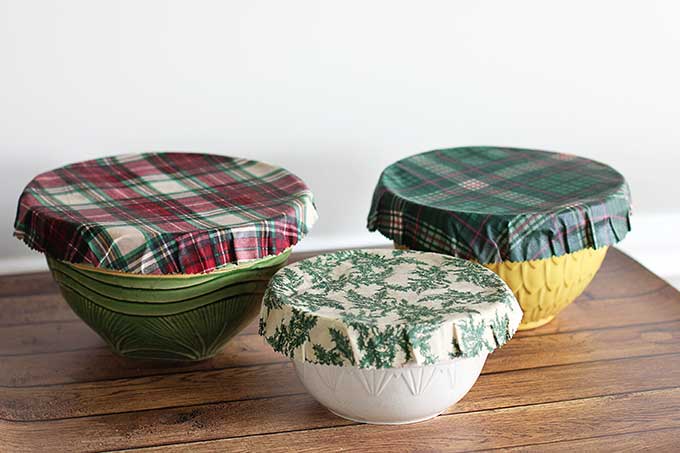The power of beeswax wraps has evolved as a creative and versatile alternative, breaking the old rules of culinary operations in the complicated dance of sustainable living. Let’s delve into the eco-friendly wonder of this unusual kitchen companion, examining its unique qualities and learning how to appreciate and use the enchanted world of beeswax wraps.
Table of Contents
Unwrapping the Eco-Friendly Magic of Beeswax Wrap: Bee’s Bounty

A beeswax wrap is essentially a piece of cotton cloth infused with beeswax, tree resin, and jojoba oil. This combination produces a malleable, water-resistant, self-adhesive wrap that can be molded to cover food products and containers, eliminating the need for plastic wrap and aluminum foil.
How to Use Beeswax Wrap for Sustainable Alchemy
Wrap and Seal:
The pliability of beeswax wraps makes them easy to use. To cover a bowl, wrap a sandwich, or encase a piece of fruit, spread the beeswax wrap over the item and mold it into place with your hands. The wrap sticks to itself, forming a natural seal.
Cleaning Ritual:
A gentle rinse with cold water and light soap is all that is required after use. To keep the beeswax covering intact, avoid using hot water. The wrap is now clean and ready for its next culinary adventure.
Reusable Resilience:
Beeswax wraps are not a one-time-use item. They can be reused for up to a year or more with proper care, making them a long-term investment that decreases dependency on single-use plastics.
Revitalizing Act:
The beeswax coating may wear off over time. Not to worry; rejuvenating your beeswax wrap is a straightforward process. A brief bake at a low temperature can restore its original enchantment.
Beeswax Wraps’ Environmental Symphony

Plastic-Free Expertise:
The potential of beeswax wraps to substitute plastic wrap and aluminum foil is their greatest strength. This eco-friendly exchange helps to reduce single-use plastics, which aligns with the goal of creating a plastic-free environment.
Biodegradable Brilliance:
Beeswax wrap, unlike plastic wraps, are biodegradable. When they reach the end of their lives, they decompose naturally and return to the earth without leaving any trace.
Lower Carbon Footprint:
Beeswax wrap manufacturing is significantly friendlier to the environment than plastic wrap manufacturing procedures. Using beeswax wraps helps you reduce your carbon footprint.
Beyond the Kitchen: Creative Ways to Use Beeswax Wraps

Covering Jars and Bowls:
Beeswax wraps are great for covering jars and bowls because they provide a breathable seal that keeps food fresh. Because of their pliability, they provide a snug fit, avoiding the need for wasteful plastic wrap.
Sandwich Cover:
It is an eco-friendly alternative to sandwich bags and can be used to wrap sandwiches for on-the-go lunches. The coverings maintain their shape and keep the contents safe.
Cheese Protector:
Ditch the plastic cheese cover. They excel at keeping cheese fresh by allowing it to air while providing a protective cover.
Creative Food Art:
Use beeswax covers to shape and sculpt food to express your culinary creativity. Because of their flexibility and adhesion, the wraps are a flexible tool for food arts.
Finally, wraps are more than simply an alternative to regular wraps; they show a commitment to environmentally friendly techniques. The combination of beeswax, tree resin, and jojoba oil yields a reusable, biodegradable, and environmentally friendly kitchen buddy. We contribute to a greener, more sustainable society by unwrapping the possibilities of wraps and discovering inventive ways to use them—one wrap at a time.
Purchasing beeswax wraps
Purchasing beeswax wraps to begin your eco-friendly path is a wise move. These adaptable and long-lasting alternatives are accessible from a variety of sources, both online and offline.

Here are some suggestions about where to purchase wraps made by beeswax:
Eco-Friendly retailers
Many eco-friendly or zero-waste retailers carry a wide range of sustainable products, including wraps. Look for stores that prioritize ecologically friendly products in your area.
Farmers’ Markets:
Farmers’ markets may include booths or stalls selling handcrafted and locally crafted items. These marketplaces’ artisans may sell beeswax wraps as part of their eco-friendly product line.
Health Food Stores:
Health food and natural product stores typically stock eco-friendly alternatives. It can be bought among other environmentally friendly kitchen and lifestyle products.
Online markets:
A variety of retailers selling wraps may be found on popular online markets such as Amazon, Etsy, and eBay. Check user reviews and product details to ensure quality.
Specialty Kitchen Stores:
Some kitchen supply and gourmet shops are recognizing the increased need for environmentally friendly kitchen products. Check out these places for a curated range of eco-friendly products, such as beeswax wraps.
Local craft fairs or DIY markets:
Local craft fairs may have artisans who make and sell homemade wraps. Buying at these events frequently benefits local companies and promotes sustainability.
Zero-Waste Shops:
They are likely to be sold in zero-waste shops, which focus on minimizing single-use plastics and encouraging sustainability. Look for actual establishments or online platforms that promote zero-waste living.
Organic food stores:
Organic food stores that value ecologically friendly methods may stock wraps made with beeswax among their sustainable offerings. Investigate the eco-friendly lifestyle aisles.
Supporting homemade or local craftspeople:
Consider supporting local craftspeople and artisans who handcraft beeswax wraps. Examine internet platforms, community bulletin boards, and social media groups where local craftsmen display their wares.
Subscription Boxes:
When buying beeswax wraps, think about the source, the materials used, and the company’s dedication to sustainability. Whether you go with a local vendor, an online marketplace, or a dedicated eco-friendly store, your choice helps to promote a more sustainable and ecologically conscious lifestyle.
want to buy towel Click here